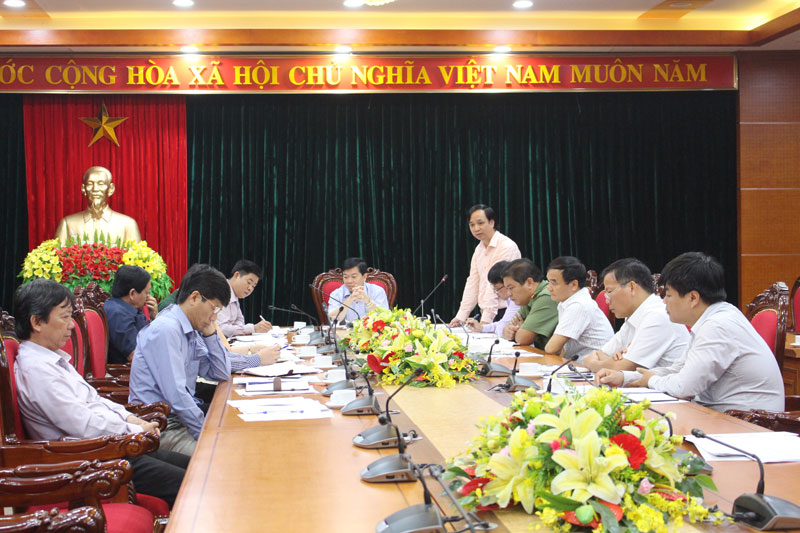
(HBO) – Hoa Binh province’s organising board of the ASEAN photo and documentary exhibition met to discuss preparations for the event, which will take place in Hoa Binh province from November 23-25. The exhibition will feature land, people, environmental protection, climate change and ethnic groups in ASEAN. Nguyen Van Chuong, Vice Chairman of the provincial People’s Committee, head of the board, presided over the meeting.

The provincial organising board
implements the preparatory plan for the ASEAN photo and documentary exhibition.
The exhibition, scheduled to be held at the Hoa Binh Cultural
Palace, will focus on the themes of land and people; environmental protection
and climate change; and ethnic groups within the ASEAN Community.
It will introduce more than 300 photos and 100 documentary films
by ASEAN photographers and directors who entered the final of the ASEAN photo
and documentary festival held in
Vietnam in 2010, 2013 and 2015.
The event is expected to promote the land and people of ASEAN,
helping Vietnamese in general and residents in Hoa Binh in particular increase
their understanding, solidarity and friendship with people in other ASEAN
member countries.
Through the exhibition, Hoa Binh will introduce its potential and
strengths in socio-economic development, as well as traditional culture to
international friends.
Concluding the meeting, Chuong said the exhibition is a
political-cultural event of Hoa Binh province this year.
He asked members of the board to soon fulfill their assigned tasks
to make the event impressive to domestic and foreign visitors.
The People’s Committee of Lac Son district held a ceremony on April 28 to receive the provincial relic certificate for the ancient rock carving site at Suoi Co stream, located in My Thanh commune.
A special music show titled "The country is in the fullness of joy” has been held at Hoa Binh Square in Hoa Binh city in celebration of the 50th anniversary of the liberation of the South and national reunification (April 30, 1975–2025).
The People's Committee of Lo Son commune, Tan Lac district, has organised the local annual traditional stream fishing festival on April 19 - 20.
As a land deeply intertwined with human history and Vietnam’s millennia-long journey of nation-building and defence, Hoa Binh is often revered for its epic tales and legends.
Residents of Hoa Binh boast a rich cultural identity, reflected in their unique language, traditional attire, customs, and folk melodies – described as "sweet as honey, clear as a mountain stream.”
Lac Son district’s Vu ban town held the 2025 Truong Kha temple festival on April 12–13 (the 15th–16th days of the third lunar month). Since its revival in 2019, the festival has been organised every three years, preserving valuable intangible heritage while meeting the community’s cultural and spiritual needs.



